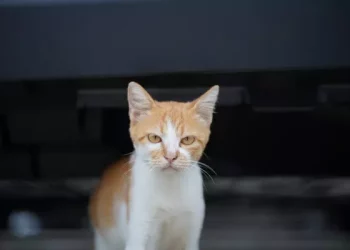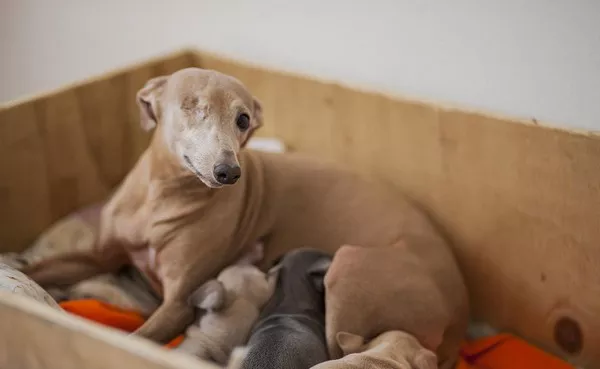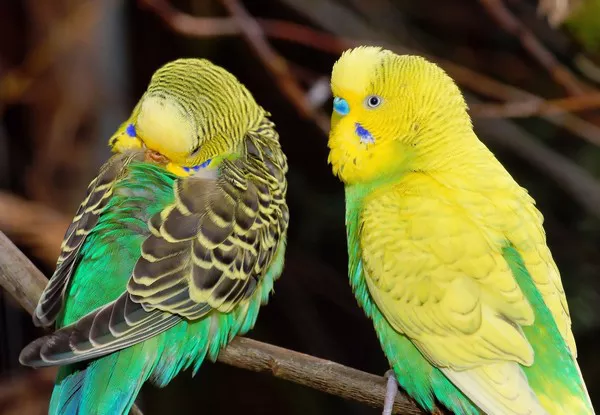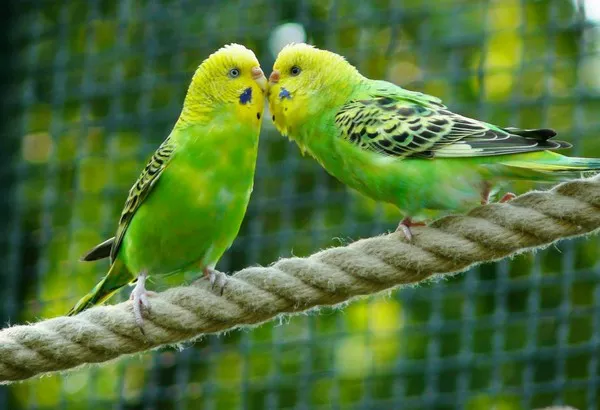The American Shorthair is one of the most popular and versatile cat breeds in the world. Known for their friendly personality, distinctive looks, and robust health, they are beloved by cat owners of all kinds. One of the most fascinating aspects of the American Shorthair breed is its wide array of coat colors and patterns. If you’re an admirer of this breed, you’ve probably wondered, “How do American Shorthairs get their color?”
The color and pattern of an American Shorthair cat are determined by a combination of genetics, biology, and environmental factors. In this article, we’ll explore the science behind how these charming cats develop their unique colors, shedding light on the complex genetic mechanisms involved.
Understanding Cat Coat Color Genetics
Before diving into the specifics of the American Shorthair, it’s important to understand how coat color works in cats, in general. A cat’s coat color is determined by genes inherited from both parents. These genes control several factors, including the basic color, the intensity of the color, the presence of any patterns, and the texture of the coat itself. A cat’s coat can also be influenced by sex-linked traits, mutations, and even environmental factors such as temperature.
The Basics of Coat Color Genetics
In general, there are several main components that determine a cat’s coat color:
Pigment Production: The two main pigments that create cat coat colors are eumelanin and pheomelanin. Eumelanin is responsible for the black and gray colors, while pheomelanin produces reds, oranges, and yellows. The presence, absence, or variation of these pigments in specific regions of the fur determines the overall color of the cat.
Color Inheritance: Cats inherit their coat color from their parents through a series of genes. The most important genes in coat color are the “B” (black) gene, the “D” (dilution) gene, and the “O” (orange) gene. The specific combination of these genes in each cat’s DNA determines their final coat color.
Genetic Dominance and Recessiveness: In genetics, some traits are dominant, while others are recessive. Dominant traits are more likely to appear in the offspring, while recessive traits may only appear if both parents carry the gene for that trait. This means that a cat can inherit a recessive color gene from both parents and display a color that is not common among their immediate family.
Temperature Sensitivity: Some cats exhibit temperature-sensitive coat colors, such as the “Himalayan” pattern in which the points (ears, face, paws, and tail) are darker than the rest of the body. This phenomenon occurs because the enzyme that produces pigment is more active at lower temperatures.
What Makes the American Shorthair Unique?
The American Shorthair is an incredibly diverse breed when it comes to coat color and patterns. They are known to come in over 80 different color combinations, including various solid colors, tabby patterns, and more. This variation is due to the breed’s broad genetic diversity.
American Shorthairs originally developed as working cats, particularly in farms and homes where their role was to control rodent populations. Over time, their characteristics, including their coat color, adapted to different environments and breeding practices.
The breed’s coat is short, thick, and dense, providing a beautiful shine. The American Shorthair is known for its good health and solid physique, but their color patterns also add to their visual appeal. They are one of the few cat breeds that display such a vast array of colors and patterns.
Key Factors Influencing American Shorthair Coat Color
Now, let’s dive into the specific factors that contribute to the color of the American Shorthair.
1. The Basic Colors:
American Shorthairs come in a variety of basic colors, the most common being:
Black: Cats with solid black coats have eumelanin as the dominant pigment. They may be pure black or have subtle variations, such as a darker or lighter hue depending on the genetics involved.
White: Cats with pure white coats are a result of a specific genetic mutation that causes the absence of any pigment in the fur. White is often associated with the “W” (white) gene.
Blue (Gray): Often referred to as “blue” in cat color terminology, this color is essentially a diluted version of black. The “d” gene, which causes color dilution, results in a soft gray or blue appearance.
Red (Orange): Red cats have a coat that is either solid or broken into a pattern. This color is determined by the presence of the “O” gene, which is responsible for producing pheomelanin, the pigment that causes a cat to appear orange.
Cream: Cream is a diluted version of red, and it appears as a soft, pale shade of orange or tan.
Chocolate: Chocolate is a rich brown color that occurs in some breeds but is rarer in American Shorthairs. The gene responsible for chocolate coloration is “b”.
2. Tabby Patterns:
American Shorthairs are often seen with tabby patterns. The tabby pattern is one of the most common and recognizable patterns in domestic cats, characterized by distinct stripes, swirls, or spots. There are several variations of tabby patterns, including:
Classic Tabby: This is the most visually striking tabby pattern. It features wide, swirling patterns on the sides of the cat, often resembling marble or bullseye shapes. Classic tabby cats often have a distinctive “M” shaped marking on their foreheads.
Mackerel Tabby: The mackerel pattern features narrow, parallel stripes that run down the sides of the cat’s body, resembling a fishbone.
Spotted Tabby: As the name suggests, this pattern consists of spots or rosettes instead of stripes or swirls. The spots can vary in size, and they are often random in placement.
Ticked Tabby: Ticked tabby cats have a subtle, even distribution of color on their coat. Instead of distinct stripes or spots, each individual hair is ticked with different shades, giving the cat a shimmering effect. The “agouti” gene, which causes the ticking effect, is responsible for this pattern.
3. Bicolor and Tricolor Cats:
Some American Shorthairs are born with two or three colors in their coat. These cats often have a base color, such as black, with areas of white or other color present. The most popular variations of bicolor and tricolor American Shorthairs include:
Bicolor: A bicolor cat has a mix of one solid color (such as black, blue, or red) with white patches, typically on the chest, paws, and face. The distribution of the colors can vary, with some cats having more white and others having more of the solid color.
Calico: A calico cat is a specific type of tricolor cat that features large patches of white, orange, and black. The genetics behind calico coloring are quite complex and are often linked to the X chromosome. In general, only females can be calicos, although there are rare male calicos, usually with an extra X chromosome.
Tortoiseshell: Tortoiseshell cats, often abbreviated as “torties,” have a combination of black and orange (or other similar colors) mixed together in a marbled pattern. Unlike calico cats, tortoiseshell cats do not have large patches of color but rather a blend of hues throughout the coat.
4. The Role of the “Dilution” Gene:
As mentioned earlier, the dilution gene can lighten the intensity of a cat’s coat color. When an American Shorthair inherits two copies of the dilution gene (one from each parent), the resulting coat color is diluted. For example, a solid black cat with this gene will appear as a soft gray or “blue” cat. Similarly, a red cat will appear cream-colored.
The dilution gene affects not only the base color but also the patterns and textures of the coat. Dilution tends to result in a softer, lighter appearance, and it is a recessive trait, meaning a cat must inherit two copies of the dilution gene for the color change to occur.
5. Other Genetic Variations:
In addition to the main genes responsible for coat color, there are several other genetic variations that can affect an American Shorthair’s coat. These include:
Pointed Patterns: As seen in breeds like the Siamese, pointed patterns occur when a cat’s extremities (ears, paws, face, and tail) are darker than the rest of the body. This is due to a temperature-sensitive mutation in the production of pigment.
Chinchilla (Silvered) Coats: Chinchilla cats, known for their silvery or shimmering appearance, have a special genetic mutation that causes their fur to have a tipped silver color. This gives them a sparkling or “glitter” effect, especially under certain lighting.
Conclusion
The coat color of the American Shorthair cat is the result of a fascinating interplay between genetics and biology. From basic colors like black, white, and red, to intricate patterns like tabby and calico, the variety of colors in this breed is a testament to the breed’s genetic diversity. Understanding the science behind how these cats get their colors helps us appreciate not just their beauty but also the complexity of their genetic makeup.
While breeders carefully select for certain traits in American Shorthairs, the wide range of potential coat colors continues to intrigue and delight cat lovers around the world. Whether you’re drawn to a sleek black American Shorthair or an elegant silver tabby, one thing is clear—each American Shorthair cat is a unique masterpiece of genetics.
Related Topics:
























